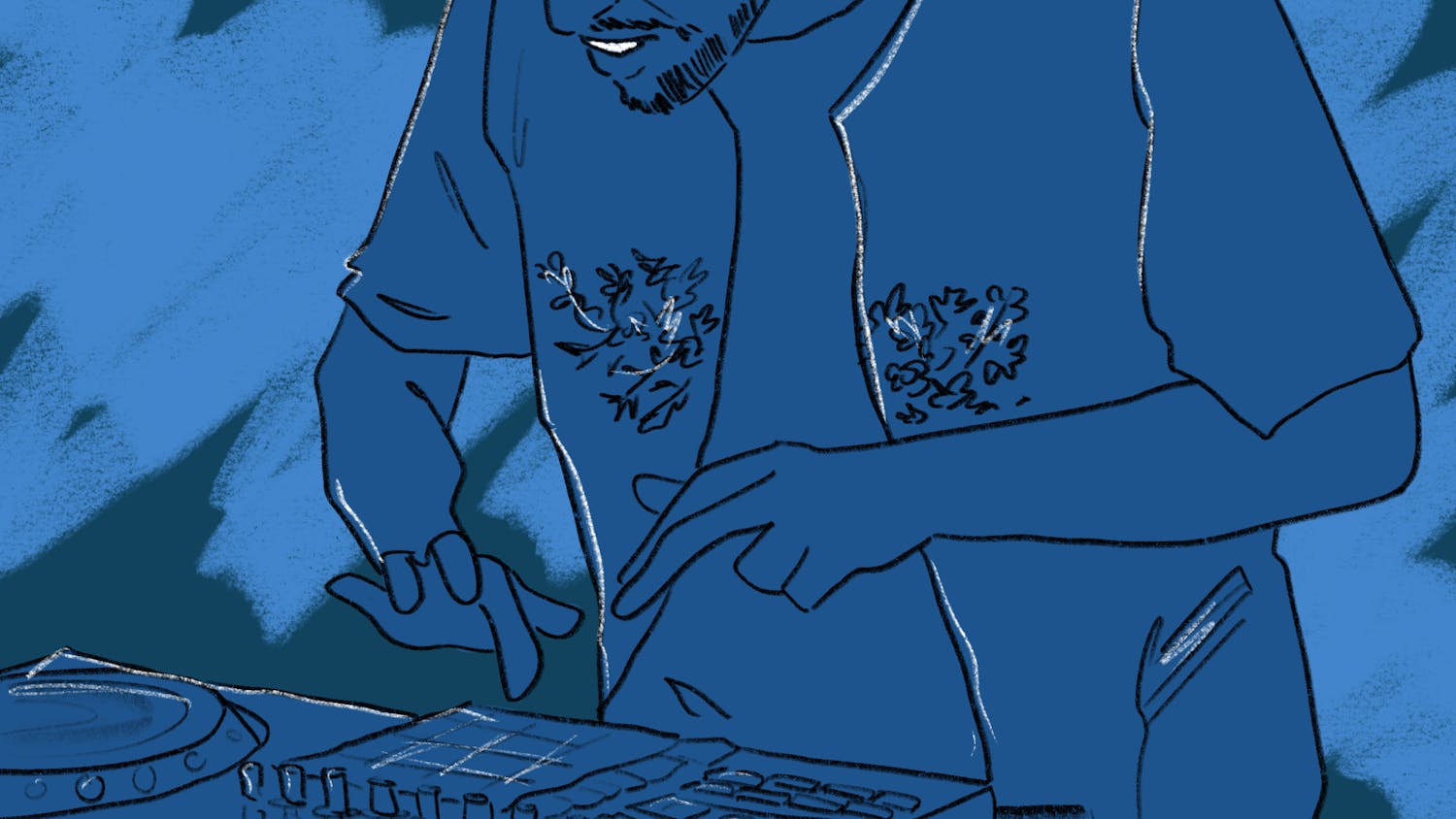Upon entering the Hood Museum of Art's new exhibition of art from the 1990s, titled "Lateral Thinking," one is tempted to conclude, "Art today is abstract and conceptual."
An arrangement of mostly peach-tinted tiles on one wall near the entrance -- Byron Kim's 1994 "Synecdoche" -- represents the skin tones of the members of the board of the Museum of Contemporary Art in San Diego.
It didn't require a lot of technical skill to create "Synecdoche." As any skeptic about modern art would note, it hardly requires Rembrandt's talent to paint a series of squares in flesh tones.
But for all its apparent simplicity, "Synecdoche" does raise a series of complicated questions.
Why create such a work? What, if anything, can we learn about the museum by staring at the skin tones of its board members?
The pieces next to "Synecdoche" seem to support the idea that the concepts behind works of contemporary art matter more than the skill needed to create them.
Inigo Manglano Ovalle's 2000 "Paternity Test" is a series of chromogenic prints of the DNA of the MCASD's board members. Again, Ovalle's work seems interesting not because the viewer wonders about the hours of patient toil he spent before the canvas, but because we wonder what his work suggests about contemporary society's fascination with genetics.
The same goes for Gary Hill's sculpture of a distorted, elongated 20-foot desk with a tiny TV monitor at the end. The story of its creation is far less interesting than the reflections the work provokes about the nature of learning.
Yet just a few steps away, several more traditional works seem to refute any such easy generalizations about contemporary art.
John Currin's 1999 "The Hobo" depicts a delicate, alabaster-skinned girl with a mane of flowing blond curls who bears more than a passing resemblance to Botticelli's Venus. It's clear that Currin views traditional, realistic painting as far from dead.
In the next gallery, Vik Muniz's photograph "Milan (The Last Supper) (From Pictures of Chocolate)" also reflects the artist's interest in traditional paintings -- and his more irreverent attitude toward them.
And, while Muniz depicts a traditional subject in a highly untraditional medium, the same gallery contains Sharon Lockhart's triptych of prints "Enrique Nava Enedina: Oaxacan Exhibit Hall, National Museum of Anthropology, Mexico City" -- an un-traditional subject shown in a traditional form. The triptych arrangement reminds viewers of medieval altarpieces, and yet their subject matter -- a man setting up an exhibition of Mexican Native American art -- is far from traditional.
In the third scene of the triptych, the museum employee is shown behind a plexiglass case so that he becomes a work of art himself. He thus becomes an artifact among the relics, raising very contemporary issues about Mexico's history of colonialism and Mexican identity.
And, lest traditionalists derive too much encouragement from walking through "Lateral Thinking, " the painting right next to "The Hobo" shows flies and maggots feasting off a decaying painting, clearly suggesting the decay of painting as an art form.
It's similarly hard to understand, after looking at this exhibition, whether artists today are more interested in "art for art's sake" or creating art that makes social and political points.
Robert Thierren's untitled 1992 sculpture--a spare, abstract blue cloud made out of enamel on steel -- could not be less political. And yet Cuban artist Jos Bedia's 1994 elaborately painted raft, "Let's Leave Now!" is as political a work of art as Thierren's is apolitical.
Derrick Cartwright, the Hood's director, described this juxtaposition as deliberate. "We wanted to create a dialogue about whether or not painting is dead," he said.
Indeed, it's hard to come to any conclusions about what contemporary art is like today after observing so many juxtapositions of the traditional and the innovative. Ultimately, the difficulty of coming up with any generalization that applies to the works only suggests the creativity of artists working today and the vitality of the visual arts."This art is our art," Cartwright said when explaining why he would encourage students to visit the exhibition, "and we have an obligation to try to understand it."
Cartwright added that artists have always challenged their contemporaries, "Why should artists today expect any less than what Renaissance artists demanded from their viewers?"



